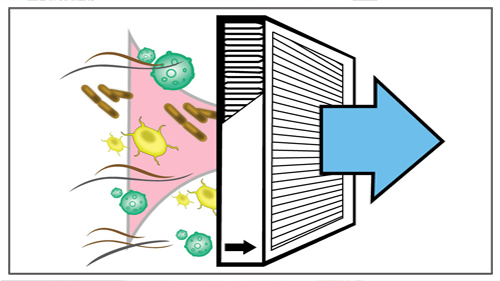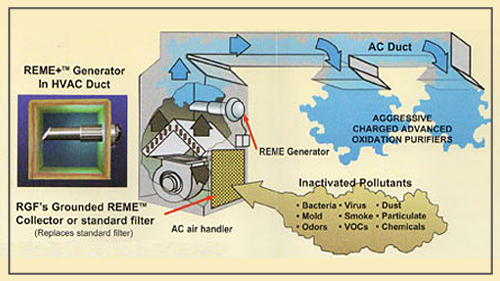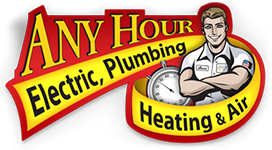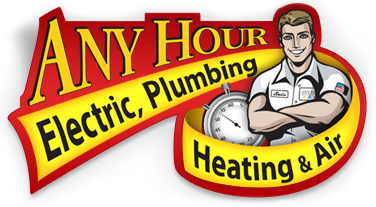What You Need to Know about Whole-home Air Purification Systems

This winter has been an especially bad one for sickness. In fact, it's been one of this decade's worst flu seasons. But while getting sick can be costly and inconvenient, it can also be a huge health risk, especially for small children and the elderly. So, while you can't realistically quarantine yourself and your family entirely from the rest of the world, there definitely are steps you can take to make your personal environment healthier. This is why more are more people are looking at home purification systems to help eradicate germs from living spaces.
You may have seen purification systems at your local store and have wondered if those might be a great idea to help get the germs, bacteria, viruses, odors, and pollutants out of the air in your home. However, these can generally only cover a relatively small area. While that might make sense for a small bedroom or home office, it simply doesn't work to cover larger living spaces or to protect each member of your home. So, many homeowners are turning to whole-home solutions to keep their families and houseguests healthy.
PASSIVE VS. ACTIVE PURIFICATION SYSTEMS
To help you understand the main difference between the various kinds of whole-home systems, we've grouped them into two types: active and passive. Both of these types of purification systems work with your existing HVAC system, utilizing your home's blower motor and ductwork to purify the air in your home. However, they work in two very different ways.
Passive systems generally wait for the air to come to them. Passive systems are those where you either install UV lights or a 13-rated MRV HEPA filter on your system. Here's how they work.

HEPA FILTER
A HEPA filter works just like your standard filter, only it's rated higher to collect and stop much finer particulates from being circulated through your air. This is a relatively inexpensive way to remove some of those airborne toxins like mold, germs, and viruses. However, there is a catch to this method. (Get it, catch? Like, catching particles?) Just like trying to breathe through a coffee straw, when the weave on your filter is tighter and more dense to catch more of the fine particles in the air, it restricts airflow. This forces your HVAC system to work harder, and actually makes your system less efficient and could be contributing to early system breakdowns. So, for the money you could be saving on this purification solution, it could potentially cost you big down the line.
UV LIGHT
Another alternative that purifies the air in a passive way is a UV light that attaches to the inside of your HVAC blower. When the air moves past the UV light, the light kills the germs, viruses, bacteria, mold, volatile organic compounds, odors, etc. that might be floating in the air. But, like any HVAC system-mounted passive purification solution, this also has a downside. Because of where it sits inside your system, there's no guarantee that the UV light will be able to clean all the air in your home. It's dependent on the air that passes over the light for effectiveness. So, while this can be an effective solution, there are no guarantees that it actually can cover the whole home or assure that every harmful particle will pass over the UV light.

REME HALO
Rather than sitting and waiting for the pollutants to come through the system, active systems will actually go after pollutants in the air and on the surfaces of your home. An active purification system like the Reme-Halo attaches to the blower of your HVAC unit, and as the air passes over the Reme-Halo device, it sends ionized hydroperoxides into the home on a search and destroy mission.
When these naturally-occurring hydroperoxides disperse through the air and settle on the surfaces of your home, they attach to particulates, pollutants, volatile organic compounds (cleaning products, chemical odors), smoke, mold, bacteria, and viruses, they actually change the pollutant's chemical makeup. What this means is that through a process called cell lysing, these friendly oxidizers revert toxins back to harmless oxygen and hydrogen. Research on this process is extensive and there are no known health risks to these hydroperoxides, which have existed naturally in our outside air for over 3.5 billion years.
While this system is really effective, there are a few downsides that mainly come upfront. In order to purchase a Reme-Halo system, you have to go through a company that is a certified dealer and then have a licensed HVAC technician install it on your HVAC unit. Purchase and installation can be costly; however, they also come new with a five-year manufacturer warranty and can help keep your home safe from germs for years to come.

Author: Amber Smith-Johnson
Copyright © 2018 Any Hour Services
Mar 14th 2018

